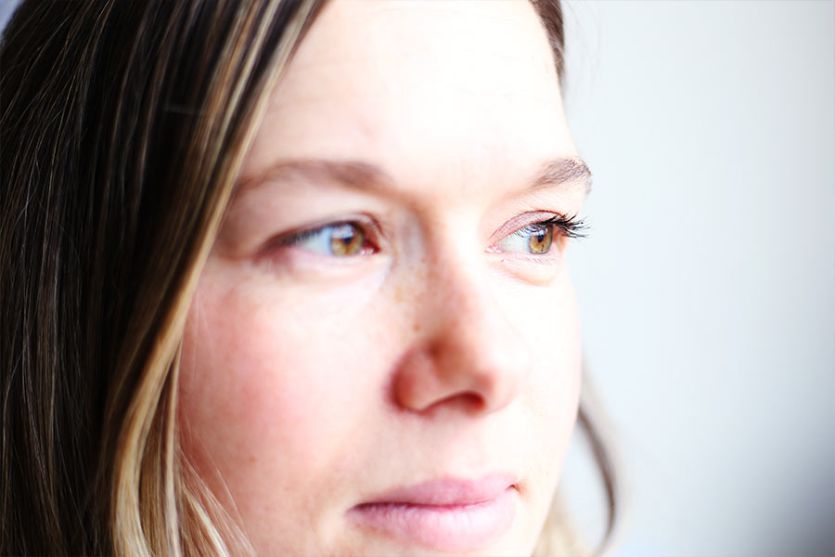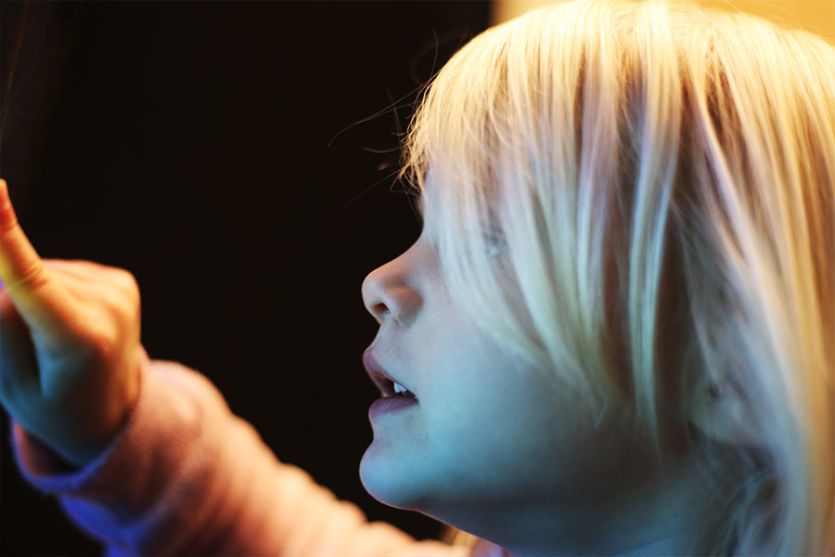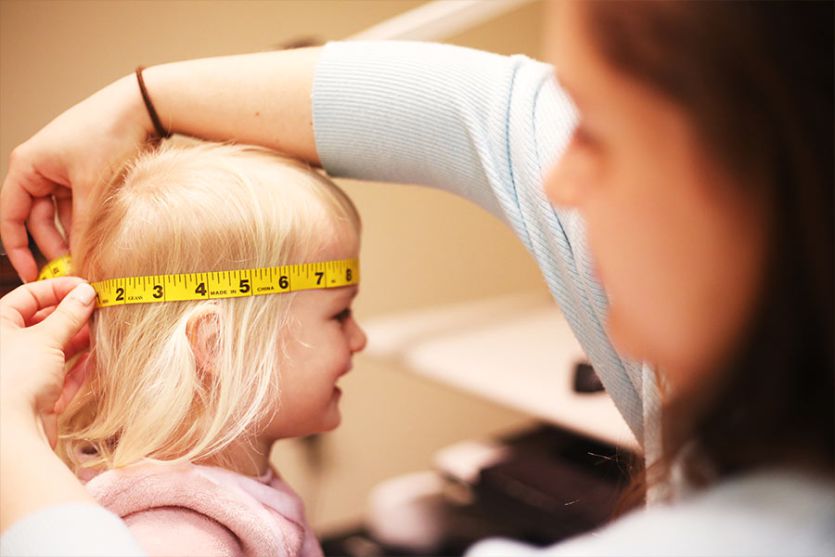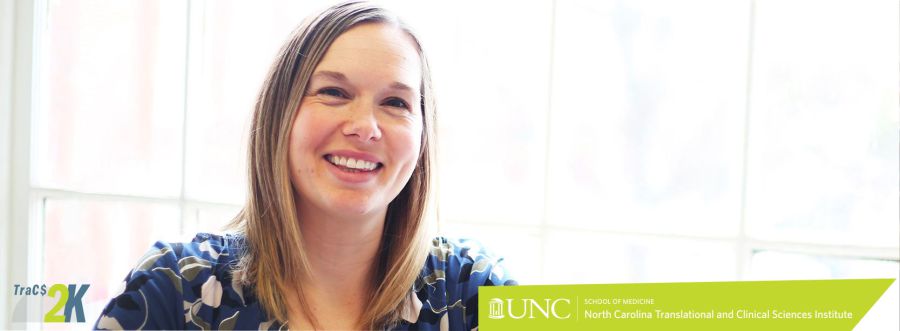
Asking the Right Questions
Why don't we see more young girls with autism? To tackle this big, complicated question, one UNC psychologist started small.
When it comes to fundamental differences between men and women, what traits are most distinct in childhood? And how do those behaviors and characteristics (whether biological, emotional, or social) impact children with autism? Why does autism appear so much more prevalent in boys?
These are some of the research questions Clare Harrop is asking.
As a developmental psychologist at UNC, Harrop wants to better understand the intersection of sex and gender between girls and boys diagnosed with autism.
Approximately one in 59 children was diagnosed with Autism Spectrum Disorder (ASD) in 2018, according to the Centers for Disease Control and Prevention. Yet boys are four times more likely than girls to be diagnosed. Harrop and other autism researchers believe those statistics may not accurately reflect the number of young autistic girls.
"There is a theory that girls use particular behaviors to mask signs of their autism," Harrop says. "They are more likely to show behaviors that we don't associate with an autism diagnosis. For example, they may use more gestures, or they may be chattier."
Harrop draws a comparison between masking behaviors and imposter syndrome.
"Many of us feel as though we have to put on a mask to mitigate some of the challenges we face," she explains. "If I'm giving a talk, I put on my 'big girl voice'. It all comes down to trying to fit in."
Harrop says these types of actions are not unique to autistic children, nor to females. "But we do see higher rates of this behavior in autistic girls."
Many autistic girls receive their diagnosis later, which means intervention starts later. To confront this problem, Harrop started asking questions about what autism looks like in girls.
Seeing where they're looking
Because every autism case is so unique, establishing biomarkers is vital. Having a set guide of biological indicators can help researchers determine where a child is in development. To do that, Harrop begins by following a child's gaze.
"We use eye tracking a lot in autism research," she says. Yet in 2016, there were no published studies of eye-tracking specifically in girls. Wanting to fill this gap, Harrop turned to the North Carolina Translational and Clinical Sciences (NC TraCS) Institute for support. She applied for a TraCS $2K Grant to conduct eye-tracking in roughly 100 children.
"For a $2,000 grant, I don't think you need do anything revolutionary," Harrop says. The $2K grant enables researchers to tackle a small "chunk" of data. For Harrop, this meant utilizing an existing protocol and applying it in a new population.
While autistic girls are regularly recruited into these types of studies, Harrop says they are rarely, if ever, represented in equal numbers to their male peers. For this study, Harrop made it a point to include 50 percent boys and 50 percent girls, as well as children not on the spectrum.
The eye-tracker Harrop and her team use is built into a computer. This means the children don't have to put on a headset or goggles — they simply look at a screen and the technology picks up where their eyes are looking.
In addition to being non-invasive, Harrop says collecting data via eye-tracking is a great option because it is scalable, affordable, and accessible – even to children with severe symptoms.
"We can get data from most children," Harrop says. "Even kids that have severe anxiety who we can't get in a scanner. Even kids who don't have language capabilities — we can still usually get eye-tracking data from them."
Opening Doors
As a post-doc from the United Kingdom, Harrop was particularly grateful to receive her first TraCS $2K Grant because she was not eligible for most other grants.
"I didn't have a green card at the time," she explains.
“I honestly think that every new faculty member, particularly those that are research-focused should look up TraCS straight away – that’s my advice to all new faculty members in Allied Health. Even if TraCS isn’t the right home for you, they’ll connect you with the right people.”
Harrop describes the $2K grant as a gateway that has opened doors to many other opportunities.
"I did not expect to get five publications, numerous conference presentations, and three more grants out of this – I'm a cheap date," she says with a laugh.
After receiving the 2K grant, Harrop applied for and received an accelerator grant from the Autism Science Foundation. Part of the eye-tracking exercise involves looking at photos of other children. "We found that girls tend to look at faces more, they tend to have more typical patterns of attention."
Harrop wondered about having the children look at more realistic stimuli, like videos of children playing together. She teamed up with a group at Children's Hospital of Philadelphia who have done a lot of this work.
"We used videos of children playing together or next to one another, and again we found similar effects. Particularly in what we call a socially lean interaction – when the kids weren't interacting with each other, they were just next to each other – autistic girls were very similar to those without autism."
Finding a Home
"I honestly think that every new faculty member, particularly those that are research-focused should look up TraCS straight away – that's my advice to all new faculty members in Allied Health," she says. "Even if TraCS isn't the right home for you, they'll connect you with the right people."
For Harrop, TraCS has certainly been the right home. Last year, Harrop joined its Gene Orringer Junior Faculty Career Development Program (TraCS KL2). Part of the program includes regular bi-weekly seminars offering feedback and support that Harrop says has been invaluable.
"I know some folks who have graduated from the KL2 program but still go to the seminars just because they enjoy it," Harrop says.
Using her career development grant, Harrop hopes to diversify her skillsets. Right now, she is learning how to use EEG technology (brain scanning) to better understand how the brain processes things differently. "So far it shows that girls and boys really are quite different, regardless of their ASD diagnosis," Harrop says. In the future, Harrop will write grants that include EEG technology.
In this way, Harrop is forging her research path one thoughtful step at a time, and she is thankful to her colleagues at TraCS for providing guidance, feedback, and vision.
"I have very good mentors. I was always told to not just think about this one grant – think about the next one," Harrop says. "Consider how it builds into everything else. And we're doing that with the $2K grant we have now."
For every grant she writes, Harrop references previous studies and lists key research questions. But the bigger and more difficult questions always remain at the forefront of her mind: "How does it affect people in the community? How will it inform understanding in the future? How will it change lives?"

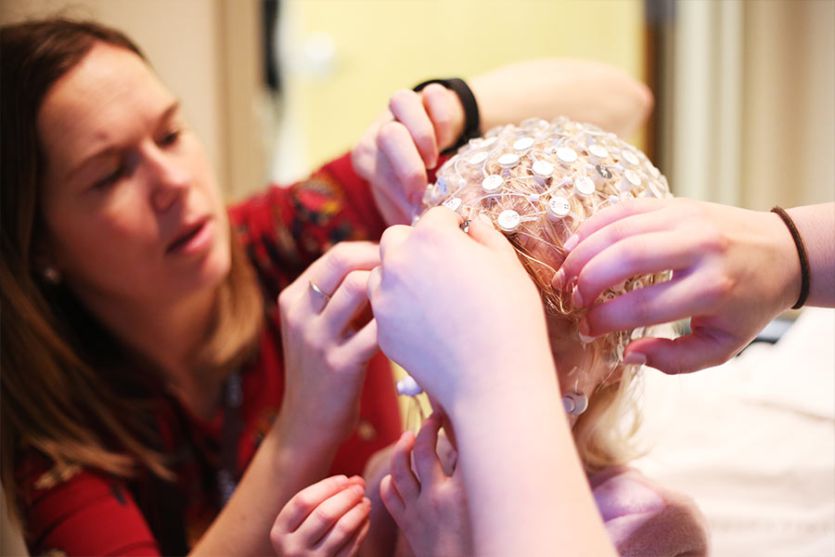
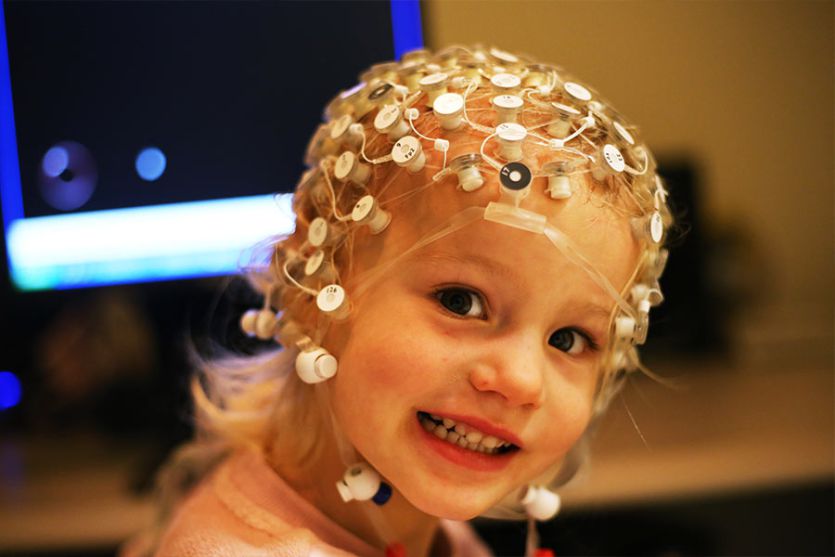
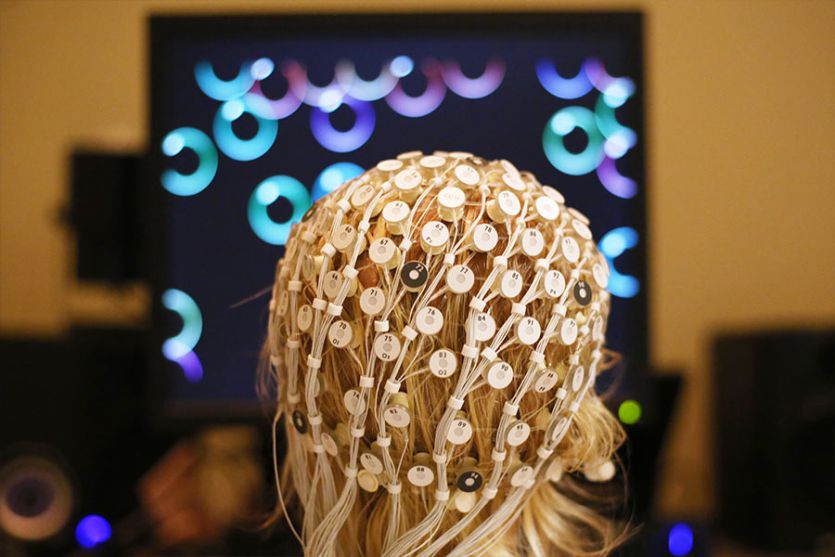
Clare Harrop's research has been supported by the NC TraCS $2K Grant, the KL2 Career Development Award, and UNC's CTSA and Autism Science Foundation. Learn more about research funding opportunities at tracs.unc.edu.
NC TraCS is the integrated hub of the NIH Clinical and Translational Science Awards (CTSA) Program at UNC that combines the research strengths, resources and opportunities of the UNC-Chapel Hill campus, partner institutions RTI International in the Research Triangle Park (RTP), North Carolina Agricultural and Technical State University (N.C. A&T) in Greensboro, and North Carolina State University in Raleigh.



